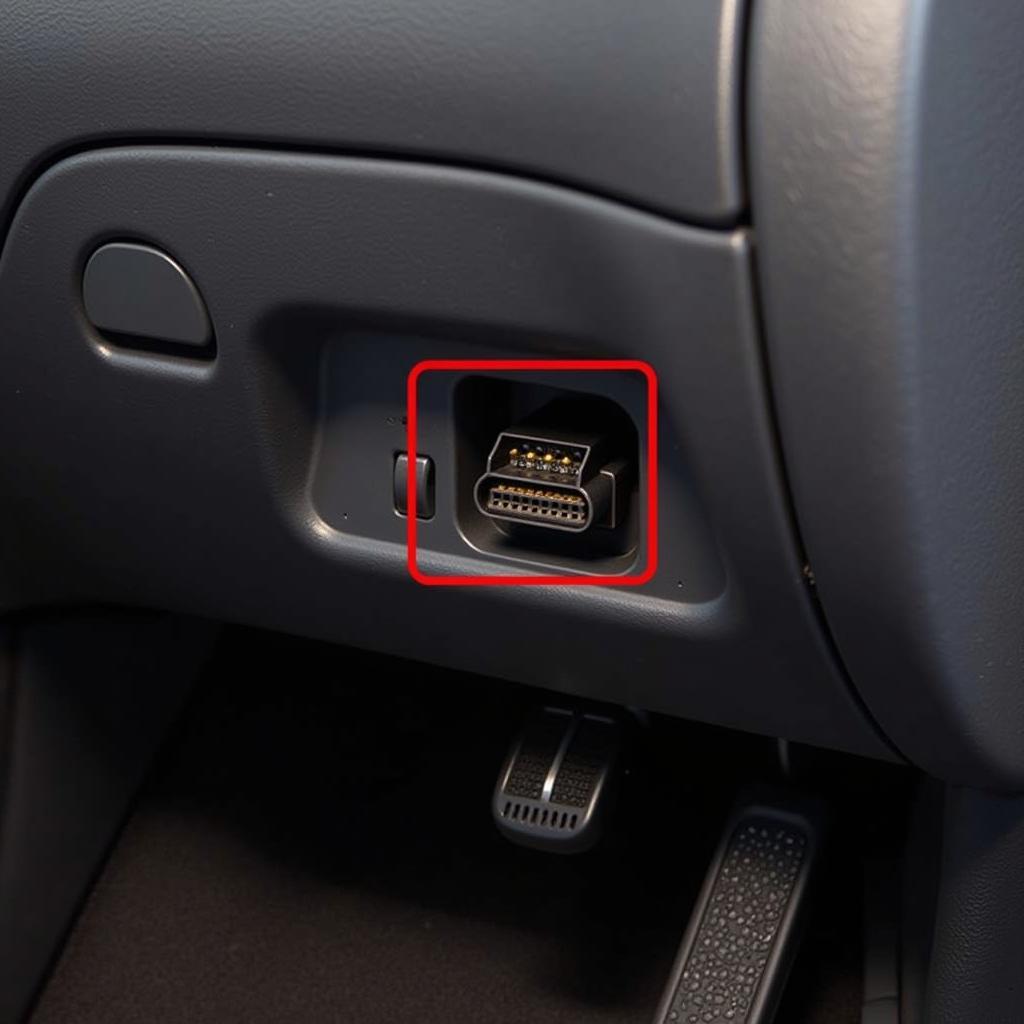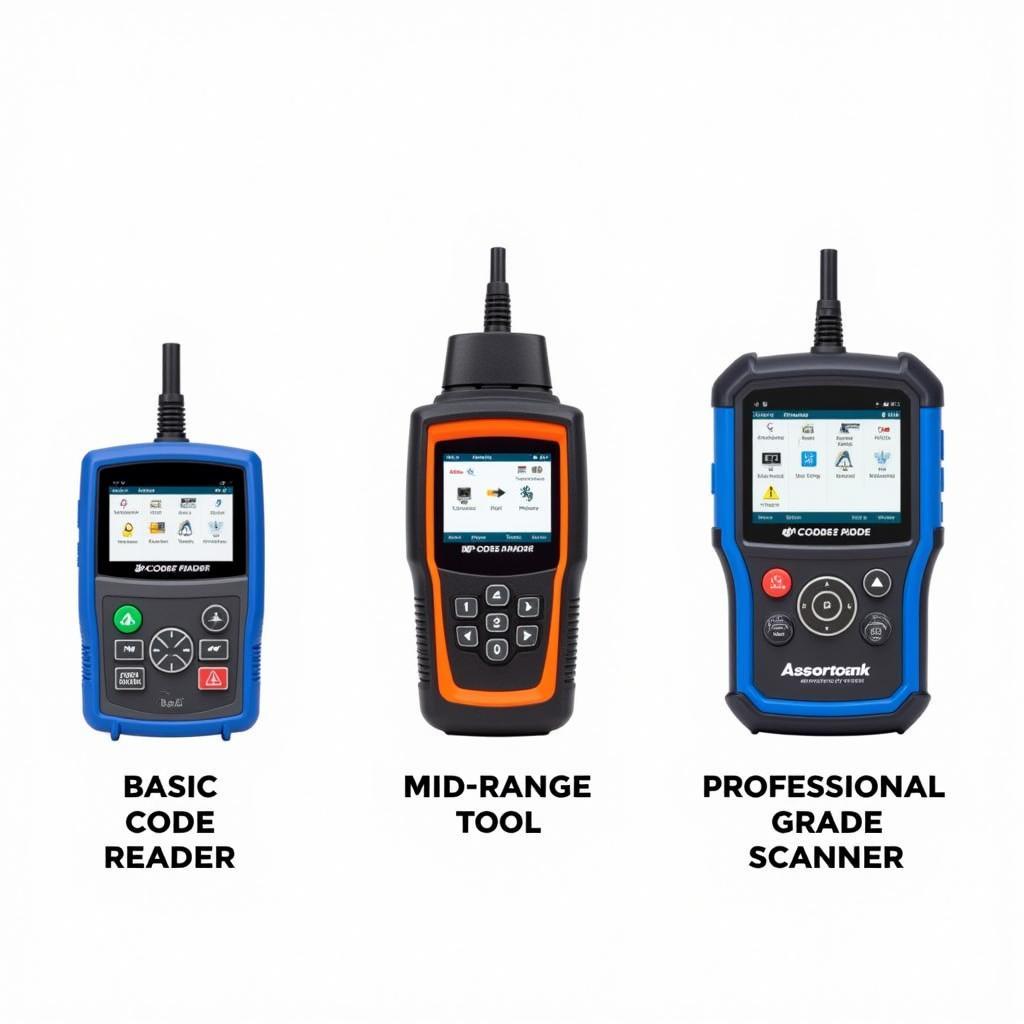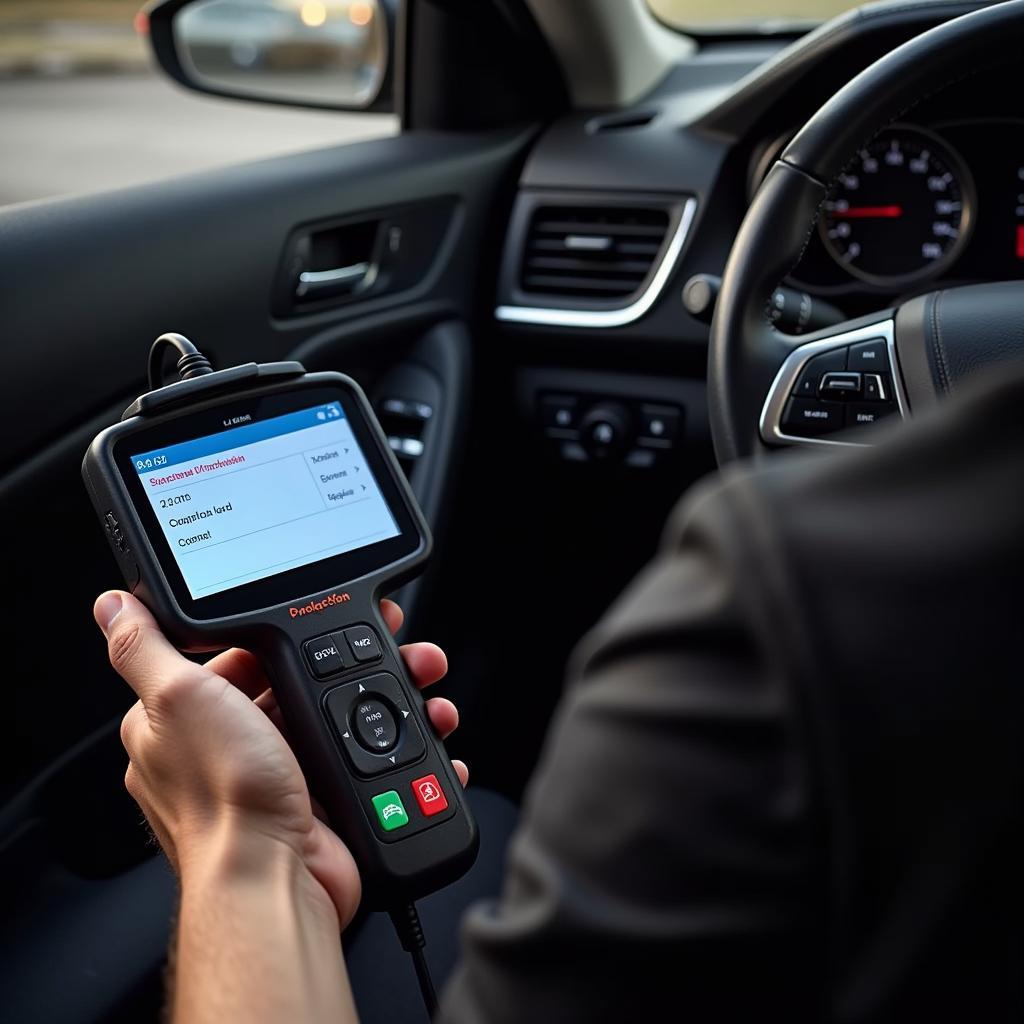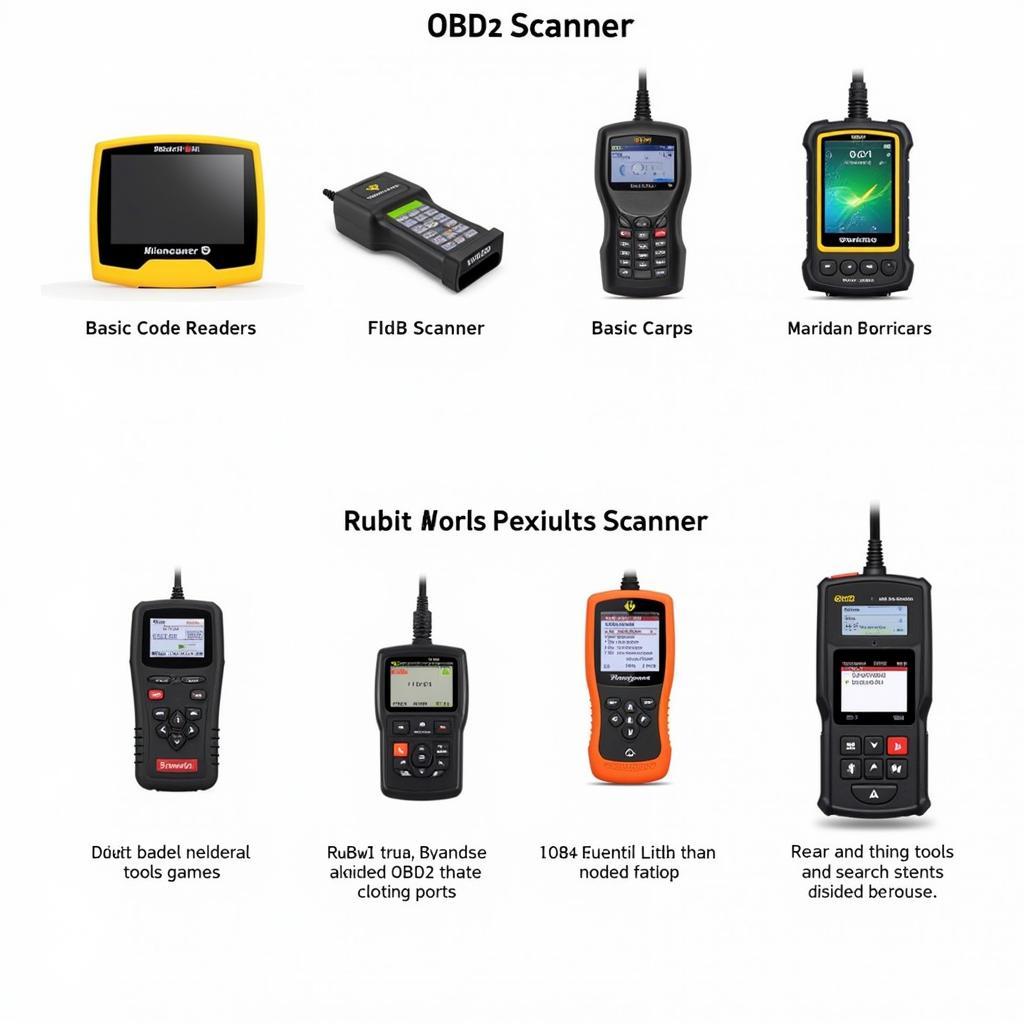A car code scanner, also known as an OBD2 scanner, is an essential tool for any car owner or mechanic. It allows you to communicate with your car’s computer, read and clear diagnostic trouble codes (DTCs), and access valuable information about your vehicle’s performance. This comprehensive guide will walk you through the ins and outs of using a code scanner car, empowering you to diagnose and potentially fix car problems yourself.
Understanding OBD2 and Diagnostic Trouble Codes
Before diving into the how-to, let’s clarify what OBD2 and DTCs are. OBD2 stands for On-Board Diagnostics, generation two. It’s a standardized system implemented in most vehicles manufactured after 1996 in the United States (and in other regions around the world) that allows external electronics, like a code scanner, to interface with your car’s computer.
When your car experiences issues, its computer stores a DTC, a unique code that signifies a specific problem. A car code scanner reads these codes, providing you with clues to diagnose the underlying issue.
 Car OBD2 Port Location
Car OBD2 Port Location
Choosing the Right Car Code Scanner
Car code scanners range from basic, affordable models to advanced professional-grade devices. For most car owners, a basic or mid-range scanner offers sufficient functionality. Here’s what to consider:
- Type:
- Code Readers: These basic scanners read and clear DTCs, offering a simple way to identify the problem area.
- Scan Tools: A step up from code readers, scan tools offer additional features like live data streaming, allowing you to monitor engine parameters in real-time.
- Professional Scanners: Offering the most comprehensive functionality, these scanners are typically used by professional mechanics and can perform advanced diagnostics and programming.
- Compatibility: Ensure the scanner is compatible with your vehicle’s make, model, and year. Most scanners support OBD2-compliant vehicles, but it’s essential to double-check.
- Features: Consider features like live data streaming, graphing capabilities, and the ability to read manufacturer-specific codes, depending on your needs.
 Types of Car Code Scanners
Types of Car Code Scanners
How to Use a Code Scanner Car: Step-by-Step Guide
Using a code scanner is a straightforward process. Follow these steps:
- Locate the OBD2 Port: The OBD2 port is typically located under the dashboard on the driver’s side. It’s a trapezoidal 16-pin connector.
- Turn the Ignition Off: Ensure your car’s engine is off before plugging in the scanner.
- Connect the Scanner: Plug the scanner into the OBD2 port. You should hear a click when it’s securely connected.
- Turn the Ignition On: Turn the ignition key to the “on” position but don’t start the engine. This powers up the scanner and allows it to communicate with your car’s computer.
- Follow On-Screen Instructions: The scanner will guide you through the process. Typically, you’ll select “Read Codes” to retrieve the stored DTCs.
- Interpret the Codes: The scanner will display the DTCs. Note down the codes and research their meaning online or using a code reference guide.
- Clear the Codes: After addressing the underlying issue, use the scanner’s “Clear Codes” function to erase the DTCs from the computer’s memory.
Interpreting Diagnostic Trouble Codes
DTCs consist of a five-digit alphanumeric code. The first character indicates the system the code relates to, such as “P” for powertrain or “B” for body. Understanding the code structure helps narrow down the potential problem area.
 Using a Car Code Scanner
Using a Car Code Scanner
Common Mistakes to Avoid
- Misinterpreting Codes: Don’t jump to conclusions based solely on the DTC. Research the code thoroughly and consider other symptoms your car might be experiencing.
- Clearing Codes Prematurely: Avoid clearing codes without addressing the root cause. This can make it harder to diagnose the problem later on.
- Ignoring Manufacturer-Specific Codes: Some scanners might display manufacturer-specific codes, which can be crucial for diagnosing complex issues. Don’t disregard them.
When to Consult a Professional
While a car code scanner is a powerful tool for DIY diagnostics, some issues require the expertise of a qualified mechanic. If:
- The code scanner reveals multiple, complex codes.
- You’re uncomfortable working on your vehicle.
- You’ve addressed the codes, but the problem persists.
It’s best to seek professional help.
Conclusion
Mastering the use of a car code scanner empowers you to take control of your car’s maintenance and repair. By understanding DTCs, following the step-by-step guide, and avoiding common pitfalls, you can save time and money by diagnosing and potentially fixing car problems yourself. However, remember that some issues demand the expertise of a professional. If in doubt, consult a qualified mechanic.
If you need further assistance or guidance on using a car code scanner, ScanToolUS is here to help! Contact us at +1 (641) 206-8880 or visit our office at 1615 S Laramie Ave, Cicero, IL 60804, USA.
Frequently Asked Questions
- Can I use any code scanner for my car?
No, ensure the scanner is compatible with your car’s make, model, and year, and supports the OBD2 protocol if your vehicle was manufactured after 1996. - Will using a code scanner void my car’s warranty?
No, using a code scanner will not void your car’s warranty. It merely reads data from your car’s computer. - Can I use a code scanner to reset my check engine light?
Yes, most code scanners have a “Clear Codes” function that can reset the check engine light after addressing the underlying issue. - What if I clear the codes, but the check engine light comes back on?
If the check engine light returns, it indicates the issue hasn’t been resolved. You’ll need to re-scan for codes and investigate further. Consider using a diagnostic scanner car for a more comprehensive diagnosis. - Can a code scanner tell me everything that’s wrong with my car?
While a code scanner is helpful, it’s not a magic solution. It primarily points to potential problem areas based on DTCs. Further inspection and diagnostics might be necessary. - Is it worth buying a car code scanner if I’m not mechanically inclined?
Even if you’re not a car expert, a basic code reader can be helpful. It provides you with valuable information about potential problems, allowing you to make informed decisions about repairs. - What’s the difference between a code reader and a scan tool?
A code reader only reads and clears DTCs, while a scan tool offers additional features like live data streaming and graphing capabilities, providing more in-depth information about your car’s performance. For example, you can explore options like the car scanner pro mod 6 or learn how to use toad car scanner while d for more advanced features.

